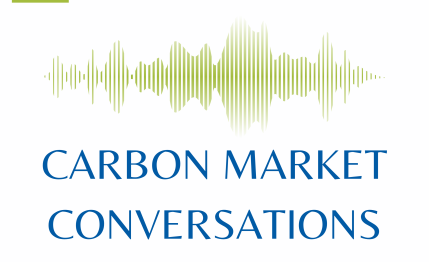Episode 1: The State of Play of Global Carbon Markets, with Stefano De Clara, Head of Secretariat at the International Carbon Action Partnership

In this debut episode of ICAP's Carbon Market Conversations, host Trevor Laroche-Theune discusses with Stefano De Clara, ICAP Head of Secretariat, about the development of compliance carbon markets around the world. After taking stock of how far we have come since the first emissions trading system (ETS) was operationalized in the EU in 2005, our brief world tour takes us through the most significant compliance carbon market developments in the regions that have experienced the most activity: Europe & Central Asia, North America, Latin America & the Caribbean, and the Asia Pacific. Today's diverse discussion content ranges from the main components of the EU's Fit for 55 package, to the ongoing development of new ETSs on four different continents, all the way to what Stefano personally sees as a key challenge that is particularly important for the carbon market community to get right in the years to come.
You can listen to this episode on the following platforms:
A few particularly noteworthy remarks:
- (3:24 - 4:15) “As of today, we have 36 emissions trading systems in force worldwide, and they immediately cover almost ten gigatonnes of CO2 equivalent. That is roughly just over 18% of global GHG emissions … Last year (2023), those systems collectively raised 74 billion US dollars in auctioning revenue. If we look back at the grand total since auctioning was introduced in emissions trading systems, that brings us to more than 300 billion US dollars collected by emissions trading systems worldwide since 2007.”
- (4:43 - 5:01) “...almost one third of the global population lives under an ETS in force right now, and jurisdictions making up 58% of the global GDP are using emissions trading systems as a tool to reduce their CO2 emissions.”
- (6:39 - 7:39) “We are also seeing that innovative system designs are emerging as more and more countries and jurisdictions are developing new systems, and especially these new developments and systems that are being designed in emerging economies are giving rise to, let’s call it a new generation of hybrid and innovative emissions trading systems that often deviate from the traditional cap-and-trade blueprint, and they take up, for example, hybrid design features that combine different carbon pricing instruments in one policy tool, or for example, they take the form of intensity-based ETS, which is becoming a popular construct, especially in emerging economies.”
- (26:59 - 28:23) “I think that the key challenge for emissions trading systems globally, but also for carbon pricing more broadly, and also possibly for climate policy even more broadly, will be to be able to maintain the support of society at large for these instruments, for the decarbonization efforts that are needed, and for the fight against climate change overall … it is crucial going forward to find the right recipe and find the right communication strategy and find the right concrete measures to make sure that not only us as policy wonks and policy geeks, but also society at large sees the value of what these policy tools can bring, and this is really an area where also we as the community of carbon market practitioners will have to put a bit more effort and attention going forward. It will be key to maintain public support for decarbonization efforts.”

